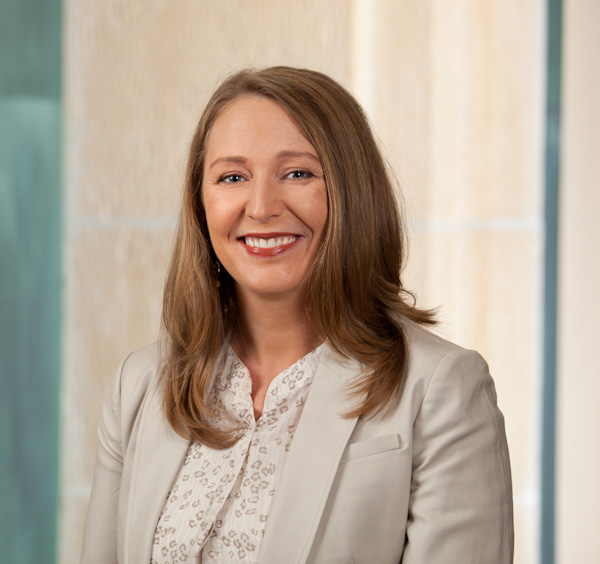The New Office
Think big. Think small. Think bold. Think green.
Whatever your concept, today’s new frontier of office design requires only that you think.
The mandate that a law firm must resemble a mahogany paneled, marble girded old boys’ club is long gone. A new design movement has emerged, and its driving force is self expression. That means aesthetics are individualized, solutions can be customized, and no two offices look alike.
Trend: Universal Office Size
When the Columbus, Ohio, law firm Schottenstein Zox & Dunn moved to a new building in late 2003, its new space provided the perfect opportunity to reflect its egalitarian philosophy. The cornerstone of this effort was creating identically sized offices. Every lawyer, from the newest associate to the most senior partner, relocated to a compact, 150 square foot room.
Some were shocked by the new layout, but outfitting each work space with the latest in ergonomic design features such as overhead storage and modular furniture helped smooth the transition. “This notion of one size offices was controversial for some of us, but it has worked out beautifully,” managing partner Jim Davidson says.
It’s an approach that’s only recently caught on among American firms, says Chris Murray, chief of the law firm design practice for Gensler, a New York City based architecture and design firm. European firms, faced with exorbitant rents, embraced this cost effective trend years ago, he says.
By creating like size offices, total square footage can be reduced by as much as 25 percent, translating to annual savings of $10,000 to $25,000 per lawyer, he says. It also eliminates intra firm moves most often caused by attrition and promotion, which can cost a firm up to $1 million annually.
Murray also believes that lawyers just do not need as much space as they think they do. What do lawyers do when they have room for a couch and chairs? Pile them up with papers, he says.
For firms considering the switch, architect Dan Jay of Christner Inc. in St. Louis says the decision shouldn’t be entirely financial.
“The decision must be based on cultural parameters,” he says. “Those parameters are really up to the individual firm. Universal office size implies a more horizontal culture, less hierarchical.”
Trend: Making It Yours
Five years ago, Washington, D.C.-based Ross Dixon & Bell took root in Chicago, and it’s still going strong. So when this satellite office moved to a new space, it wanted the décor to reflect its continuing commitment to the Windy City. The result: an updated ode to the area’s favorite architectural son, Frank Lloyd Wright.
To achieve this look, designers used generous amounts of Mission style millwork throughout the space, even accenting door frames, staff workstations and hallways. To keep the weight of the wood from overwhelming the look, designers decided to paint the paneling in creamy hues and to fit decorative stained glass into certain doors. Scattered throughout the office are architectural artifacts with local historical significance, including a gilded plaster frieze from the Louis Sullivan designed Chicago Stock Exchange Building and an ornate elevator plate from an 1890s office building designed by Daniel H. Burnham.
At Moye Giles in Denver, inspiration for the interior design came from the firm’s branding effort, says the law firm’s executive director, Lorri Salyards. The décor builds on the firm’s logo and other marketing materials, using some of the same modern styles and bold colors, like vibrant hues of red and gold. And while many firms are eliminating their libraries or hiding them in back rooms, Moye Giles is emphasizing its books. The collection is housed in many spaces, including an Italianate themed rotunda striped in red and white.
It’s all part of a trend of making offices and architecture the fingerprints of a law firm’s culture, says San Francisco architect Richard Hannum. “The facilities that are created are those fingerprints.”
Hannum followed this trend when designing a groundbreaking space for San Francisco plaintiffs lawyer Robert Arns. The goal was to create a nonconfrontational environment where Arns’ seriously injured clients would feel safe. The solution was to design the office around a large, communal kitchen. Because of Arns’ many clients in the construction industry, Hannum highlighted their craft by exposing timber and steel beams.
In Philadelphia, the design of the new headquarters of Duane Morris hinges on the firm’s longtime connection to the art world. To showcase the firm’s renowned collection, interiors will be kept muted with light colored walls and wood, fostering a firm culture where, chairman Sheldon Bonovitz says, art is “very much a part of our lawyers’ lives.”
Trend: One Wow Space
Law firms concerned about security or embarrassed by messy lawyers’ offices no longer want visitors wandering around practice floors. Designers have addressed these issues by creating a “conference center” where a firm can present an impressive, efficient face to the public while keeping private spaces private.
That’s the approach taken by Brown Raysman Millstein Felder & Steiner with its new Los Angeles office. The firm is creating an elaborate reception area with a coffered ceiling and extensive use of limestone to showcase four glass enclosed conference rooms, partner Henry Silberberg says. But the space is also functional, boasting smaller breakout rooms and war rooms.
Modular furniture and movable walls make it easy to customize public space to meet the demands of any situation, client or case, says Jay of Christner Inc. Typically, about 70 percent of a law firm’s needs can be met by creating a number of rooms that hold eight to 10 people, he says. Design tricks such as glass doors can make the spaces seem larger.
At Dickstein Shapiro Morin &Oshinsky in Washington, D.C., first impressions matter. It created a wow space for the reception area and freed up its receptionist to accommodate guests by routing phone calls to an employee sitting in a nonpublic space.
Trend: Doing More With Less
When the Silicon Valley office of Fenwick & West moved to a new space in Mountain View, Calif., in 2002, it spent about $2,500 per office on furniture. Not bad considering the average expenditure ranges between $5,000 and $15,000, Christner’s Jay says. Even better, the firm was able to avoid the uncomfortable, nonfunctional furniture that fills many a firm, regardless of the size of the budget.
Julie O’Loughlin, director of operations and facilities, says the firm cut costs by dealing directly with the furniture manufacturer, and it upped the efficiency factor by choosing modular furniture with separate components that fit together to serve various needs. Going modular was a smart move, says interior designer Grace Corbin, also of Christner.
This style allows a law firm to choose a single, standard set of furnishings that can be adapted for each employee’s specialized needs, she says. To further control costs, the firm can limit add on options like drawers and side tables, and reduce the range of available wood finishes, she says.
While everyone likes a nice desk, a chair often makes or breaks an office and that chair can also break the bank, especially if every lawyer is asking for the iconic Herman Miller Aeron chair.
With the retail price of the Aeron chair bumping up against four figures, it can be too expensive for some firms. There are, however, a host of other ergonomically designed chairs at much lower price points, such as the Think chair from Steelcase. Even Herman Miller offers an alternative: Its Mirra chair has a similar look and feel to its Aeron chair, but is priced about 20 percent less.
Representatives for both furniture manufacturers note that actual prices vary depending on the materials and fabrics chosen, and volume discounts can be negotiated.
What’s priceless, of course, is good old fashioned ingenuity. When Victoria Tran Sood of San Jose, Calif., opened her solo practice in 2003, she wanted her office to be contemporary and stylish, yet she had to watch expenses. She was able to achieve that look for less by painting her existing office furniture in bright hues of blue, green and yellow, and adding potted orchids for an elegant finishing touch.
Trend: Promoting Socialization Through Design
In a crowded marketplace, client satisfaction revolves around service, and the ability to command a firm’s myriad resources to provide seamless services to every client is a competitive advantage, says Jay of Christner. That’s why it’s more important than ever for lawyers within a firm to be able to connect. Often the best way to achieve this level of interaction, Jay says, is to share a meal.
Don’t think break room or cramped lunch quarters. Firms are taking design tips from retailers like Starbucks and Borders, creating employee lounges outfitted with plasma TVs, fireplaces and lounge chairs that make the spaces feel like family rooms.
That’s definitely the vibe at Fenwick & West. The firm is so committed to the idea of fostering social interaction that each floor features a “chance encounter space” near the elevator banks, a sort of minilounge with coffee and light food service alongside office equipment. The idea, O’Loughlin says, is to provide an opportunity to mingle, even if it’s done while waiting for an elevator or making copies.
Trend: The Environmentally Friendly Office
Today’s law offices are notably lighter and brighter. And, thanks to a variety of new products and techniques drawn from sustainable and renewable resources, they are a lot greener.
Design techniques can also promote energy efficiency. To lessen reliance on overhead electrical lighting, for example, more glass can be incorporated into office walls and doors, says designer Ken Baker of Gensler. Outfitting an office with operable windows can reduce electric bills, too, by allowing lawyers to reach for a lever before they start adjusting the thermostat.
In San Francisco, Hannum used operable windows and skylights to bring more natural light into the warehouse he converted into a law office for lawyer Arns. His strategy wasn’t entirely free of challenges–work spaces couldn’t be situated under skylights because of temperature and light fluctuations–but adding a dose of fresh light and air improved the look and feel of the office while lowering the firm’s electric bill.
A wide variety of textiles for walls and floors are now being manufactured in environmentally friendly materials, Corbin of Christner says, and some manufacturers are even making chairs out of recycled materials.
Jill Schachner Chanen, a lawyer, is a legal affairs writer for the ABA Journal.



